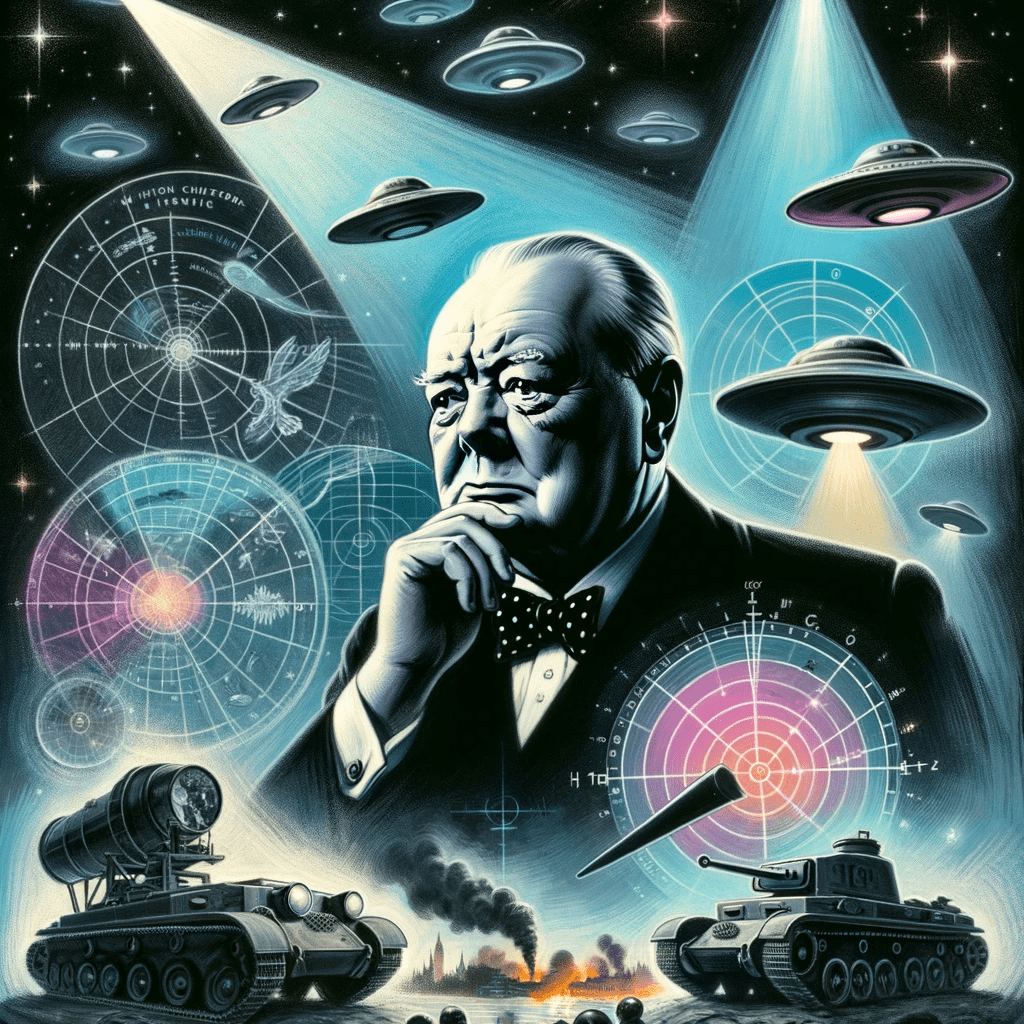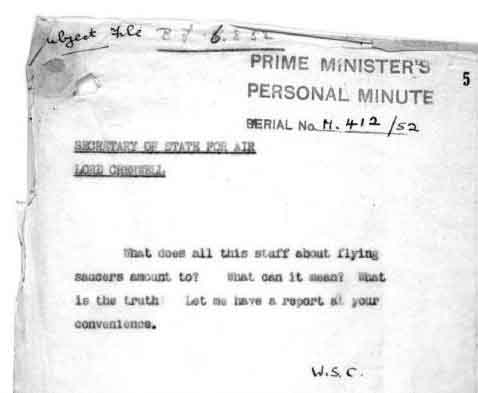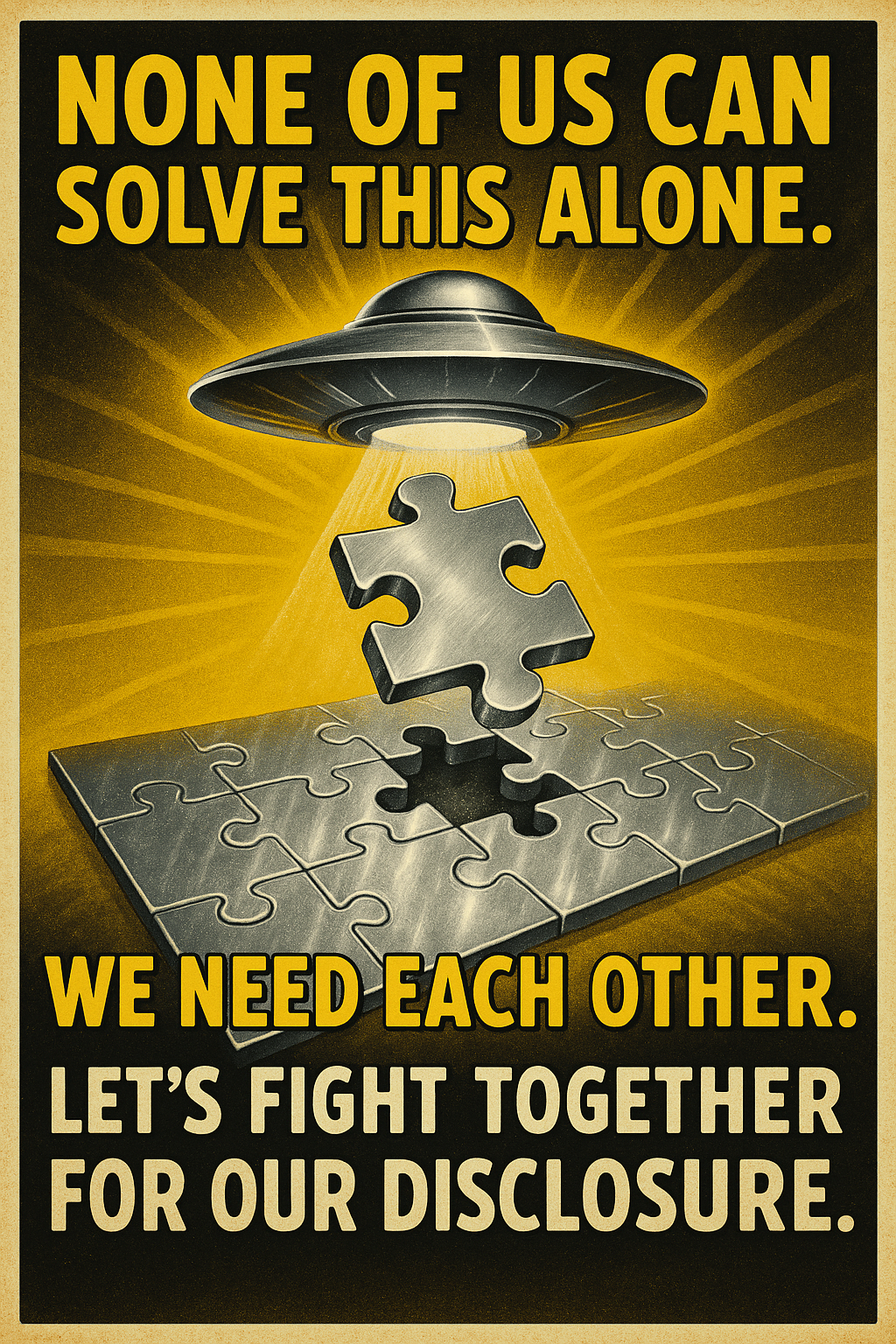Winston Churchill Memo

In the summer of 1952, amid a global surge in UFO sightings, Winston Churchill issued a brief but striking memo that captured the spirit of a world teetering between Cold War anxieties and cosmic curiosity. Addressed to his Secretary of State for Air, Lord Cherwell, the note—dated July 28, 1952—posed three simple but piercing questions about the mysterious flying saucers making headlines around the world.
Churchill’s inquiry wasn’t a casual remark. It came just days after a widely publicized series of radar sightings over Washington, D.C., where glowing objects appeared repeatedly above the U.S. capital. Jet fighters were scrambled. Headlines blared. Public nerves were rattled. Back in Britain, Churchill wanted clarity. Was this hysteria, enemy surveillance, or something stranger?
According to research from the UK National Archives, Churchill’s memo triggered a formal response. On August 9, 1952, he was informed that nothing since 1951 had changed the Air Ministry’s opinion—most sightings could be attributed to natural or manmade causes. The Americans, they said, seemed to think the same.
But the groundwork had already been laid. A year earlier, in 1951, a top-secret unit called the Flying Saucer Working Party had submitted their findings. Formed under the Directorate of Scientific Intelligence, the group reviewed British and American sightings. Their verdict? The sightings were mostly due to misinterpretations of known objects, atmospheric phenomena, illusions, or hoaxes. They concluded: “No further investigation should be undertaken unless and until some material evidence becomes available.”
That six-page report was still classified when Churchill sent his memo. This group was a direct policy precursor to the 1952 inquiry. The memo itself, titled ‘Prime Minister’s Personal Minute’ and marked Serial No. M.412/52, is stark and succinct. Typed in all capital letters and initialed ‘W.S.C.’, it was addressed to Lord Cherwell.
What does all this stuff about flying saucers amount to? What can it mean? What is the truth? Let me have a report at your convenience.
The physical copy shows wear at the edges, a faint handwritten label at the top, and the clean, typewritten urgency of a wartime statesman turning his gaze to the unknown.

Interestingly, Churchill’s connection to unidentified aircraft dates even further back. In 1912, while serving as First Lord of the Admiralty, he responded to a scare involving an unidentified aircraft spotted above Sheerness, Essex. Though nothing conclusive was found, newspapers speculated about German airships—long before “UFO” became a cultural fixture.
There is also a lesser-known but intriguing claim from 1999: a letter to the UK Ministry of Defence alleged that Churchill, during World War II, had covered up a UFO incident involving an RAF crew and a metallic object shadowing their plane. The letter claimed Churchill feared mass panic and a crisis of religious belief, reportedly saying such an event should be classified for at least 50 years.
Returning to 1952, Churchill’s questions reflected the public mood: equal parts wonder and worry. The timing, in the wake of escalating Cold War fears and global UFO sightings, underscored his instinct to stay ahead of both public perception and military unknowns. Though decades have rolled on, and explanations have evolved, the core of Churchill’s inquiry still lingers—a timeless demand for clarity in a world where the skies haven’t stopped stirring questions.


